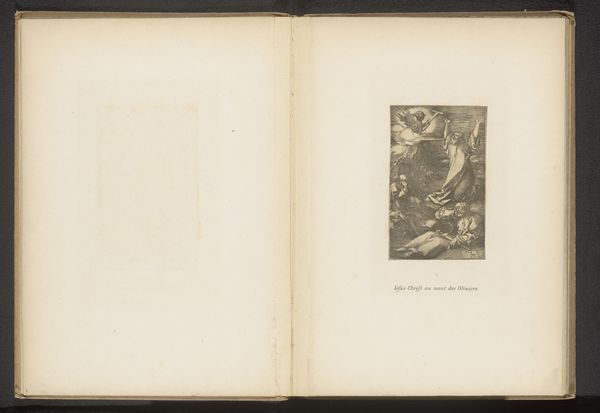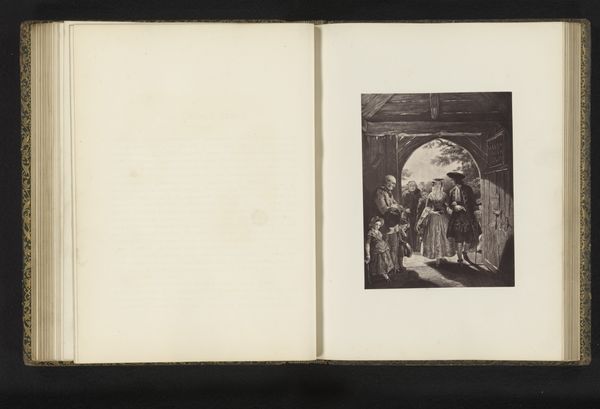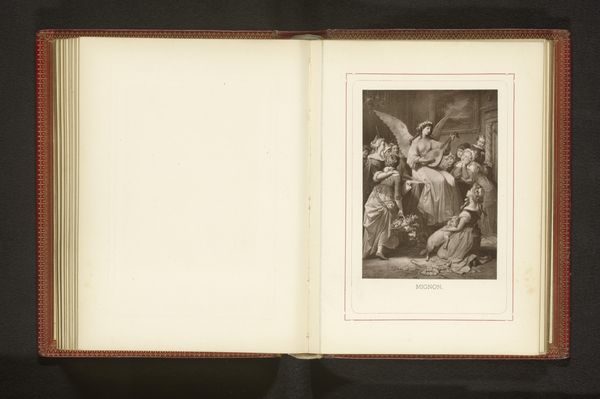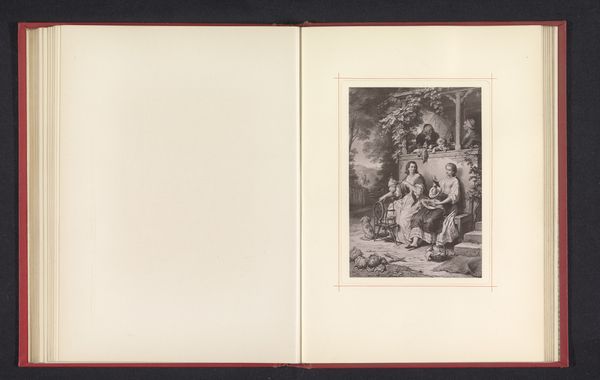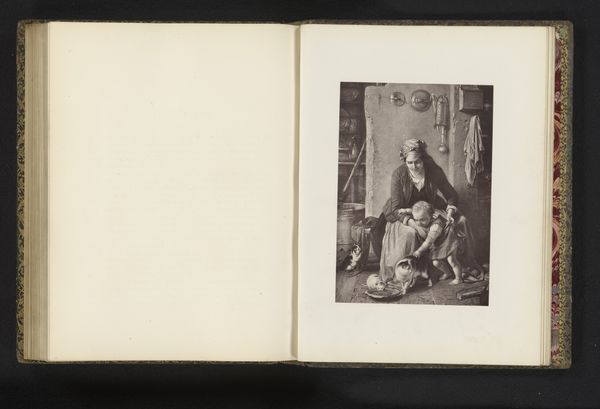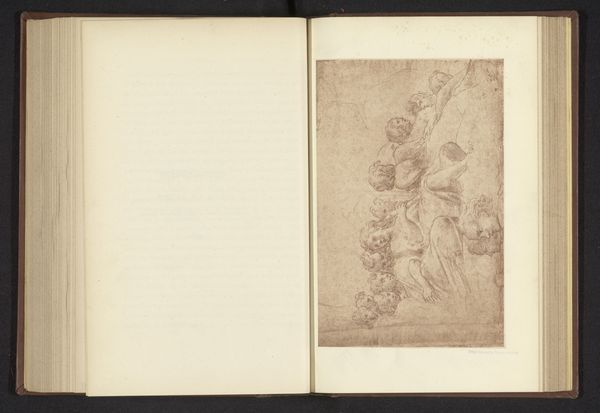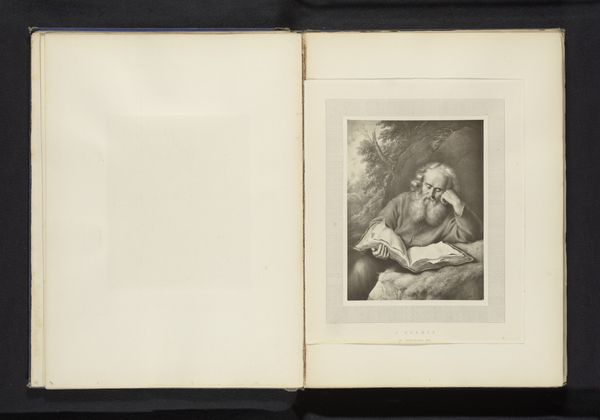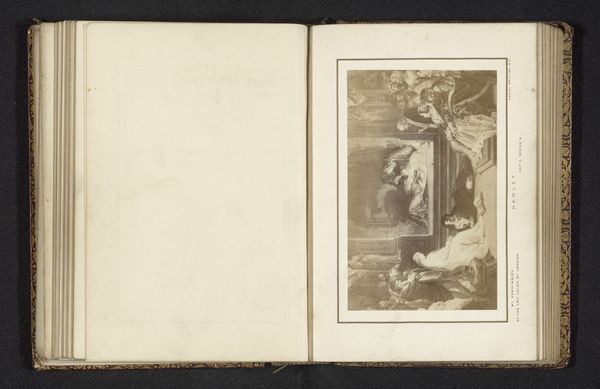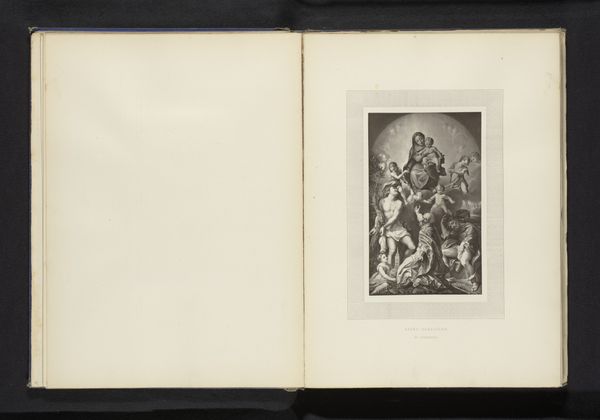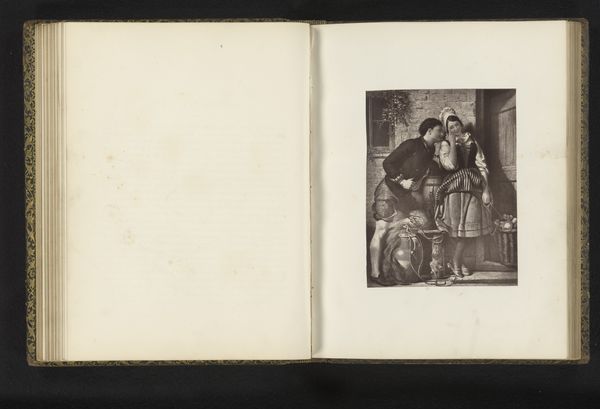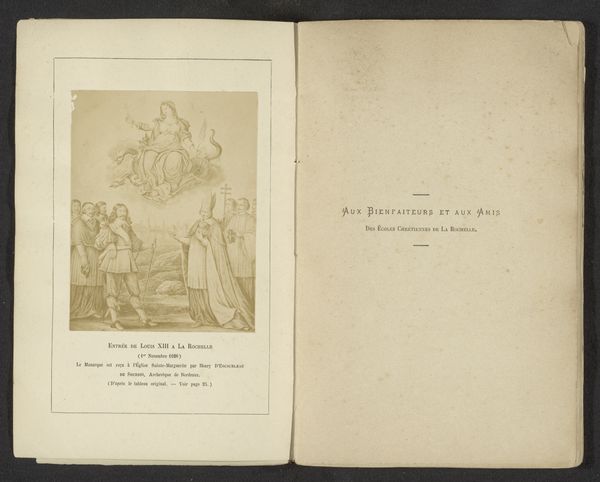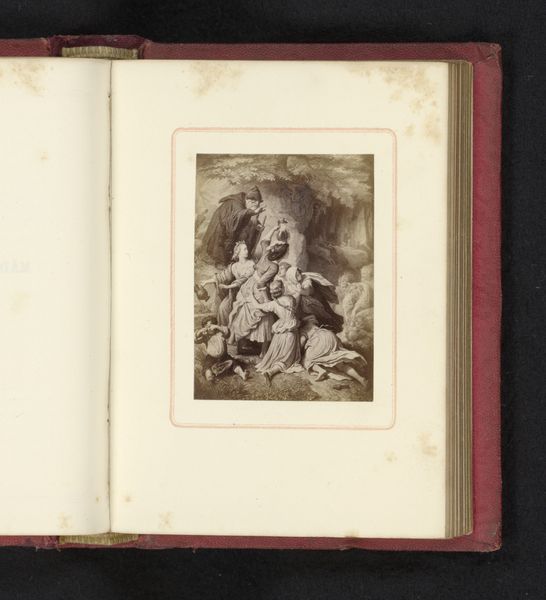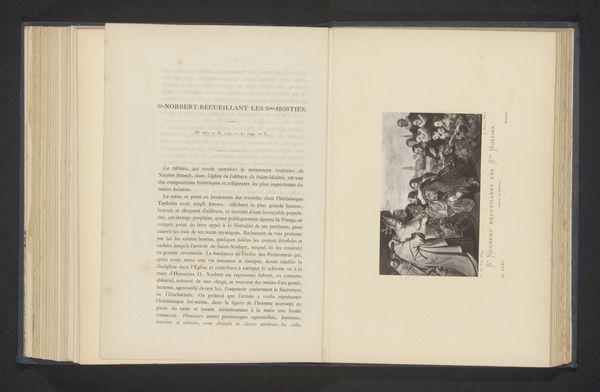
Reproductie van Christus voor Pontius Pilatus door Albrecht Dürer before 1871
0:00
0:00
simonautoovey
Rijksmuseum
print, engraving
#
medieval
#
narrative-art
# print
#
figuration
#
line
#
history-painting
#
engraving
Dimensions: height 114 mm, width 73 mm
Copyright: Rijks Museum: Open Domain
This print, "Reproductie van Christus voor Pontius Pilatus door Albrecht Dürer," held at the Rijksmuseum, was rendered by Simonau & Toovey using etching, a printmaking technique with a long and fascinating history. The process begins with a metal plate, traditionally copper or zinc. This plate is coated with a waxy, acid-resistant substance known as the ground. The artist then draws through this ground with a sharp needle, exposing the metal beneath. The plate is then immersed in acid, which bites into the exposed lines, creating grooves. The longer the plate remains in the acid, the deeper and darker the lines will be. Ink is then applied to the plate, filling the etched lines, and the surface is wiped clean. Finally, the plate is pressed onto paper, transferring the ink and creating the print. What's remarkable about etching is how it democratizes art. It allows for the reproduction of images on a scale impossible with unique works like paintings or sculptures. This has vast social implications, making art accessible to wider audiences and fueling the spread of ideas. Etching embodies how materials, making, and context combine to shape our understanding of art and its role in society.
Comments
No comments
Be the first to comment and join the conversation on the ultimate creative platform.
